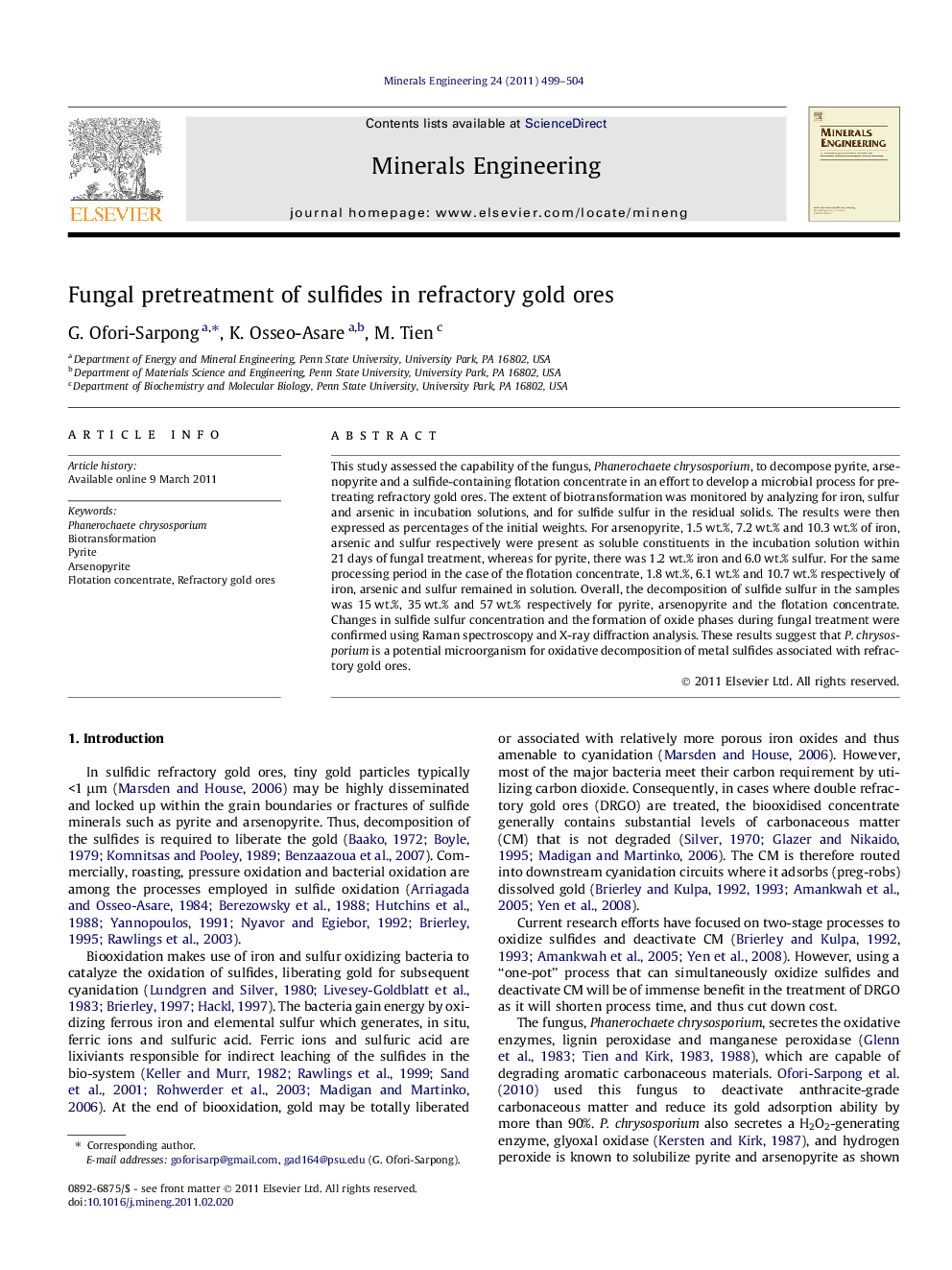| Article ID | Journal | Published Year | Pages | File Type |
|---|---|---|---|---|
| 233825 | Minerals Engineering | 2011 | 6 Pages |
This study assessed the capability of the fungus, Phanerochaete chrysosporium, to decompose pyrite, arsenopyrite and a sulfide-containing flotation concentrate in an effort to develop a microbial process for pretreating refractory gold ores. The extent of biotransformation was monitored by analyzing for iron, sulfur and arsenic in incubation solutions, and for sulfide sulfur in the residual solids. The results were then expressed as percentages of the initial weights. For arsenopyrite, 1.5 wt.%, 7.2 wt.% and 10.3 wt.% of iron, arsenic and sulfur respectively were present as soluble constituents in the incubation solution within 21 days of fungal treatment, whereas for pyrite, there was 1.2 wt.% iron and 6.0 wt.% sulfur. For the same processing period in the case of the flotation concentrate, 1.8 wt.%, 6.1 wt.% and 10.7 wt.% respectively of iron, arsenic and sulfur remained in solution. Overall, the decomposition of sulfide sulfur in the samples was 15 wt.%, 35 wt.% and 57 wt.% respectively for pyrite, arsenopyrite and the flotation concentrate. Changes in sulfide sulfur concentration and the formation of oxide phases during fungal treatment were confirmed using Raman spectroscopy and X-ray diffraction analysis. These results suggest that P. chrysosporium is a potential microorganism for oxidative decomposition of metal sulfides associated with refractory gold ores.
Research highlights► Encapsulation of fine gold particles in sulfide matrix limits gold dissolution. ► Decomposition of sulfides is required to liberate encapsulated gold grains. ► Phanerochaete chrysosporium was investigated for its ability to decompose sulfides. ► P. chrysosporium was effective in decomposing sulfides. ► The results demonstrate a promising alternative pretreatment method.
